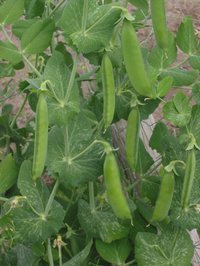 |
|
|
|
Fri, 19 Apr, 2024
|

|
|

Pay as you go
No monthly charges. Access for the price of a phone call
Go>
Unmetered
Flat rate dialup access from only £4.99 a month Go>
Broadband
Surf faster from just £13.99 a month Go> |
Save Even More
Combine your phone and internet, and save on your phone calls
More Info> |
This weeks hot offer
 24: Series 5
24: Series 5
In association with Amazon.co.uk £26.97 |
|
 Varieties of soybean seeds, a popular legume
 Pea pods
The term legume has two closely related meanings in botany, a situation encountered with many botanical common names of useful plants, whereby an applied name can refer to either the plant itself, or to the edible fruit (or useful part). Thus, "legume" can be:
- The common name for plant species in the Family Fabaceae (or Leguminosae);
- The name of a type of fruit, characteristic of leguminous plants:
- A legume is a simple dry fruit which develops from a simple carpel and usually dehisces (opens along a seam) on two sides. A common name for this type of fruit is a "pod", although pod is also applied to a few other fruit types. Well-known plants that bear legume fruits include alfalfa, clover, peas, beans, lupins and peanuts. A peanut is not a nut in the botanical sense; a peanut is an indehiscent legume, that is, one that does not spontaneously split open along a seam.
Legumes are noteworthy for their ability to fix atmospheric nitrogen, an accomplishment attributable to a symbiotic relationship with certain bacteria known as rhizobia found in root nodules of these plants. The ability to form this symbiosis reduces fertilizer costs for farmers and gardeners who grow legumes, and means that legumes can be used in a crop rotation to replenish soil that has been depleted of nitrogen.Legume seed and foliage has a comparatively higher protein content than non-legume material, probably due to the additional nitrogen that legumes receive through nitrogen-fixation symbiosis. This high protein content makes them desirable crops in agriculture. Farmed legumes fall into two classes: forage and grain. Forage legumes, like alfalfa, clover and vetch, are sown in pasture and grazed by livestock. Grain legumes are cultivated for their seeds, and are also called pulses. The seeds are used for human and animal consumption or for the production of oils for industrial uses. Grain legumes include beans, lentils, lupins, peas and peanuts.The term is derived from the French word "légume" (which, however, has a wider meaning and refers to any kind of vegetable). |
Change Text Size:
[A]
[default]
[A] |




 |
|
|
|
|